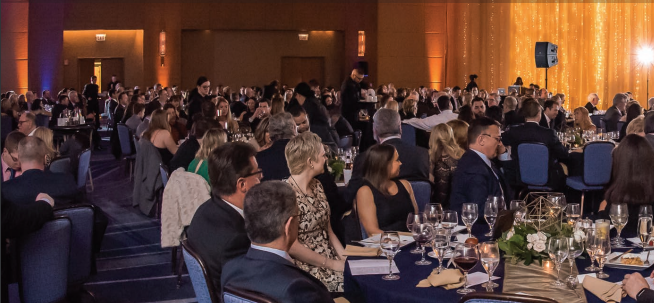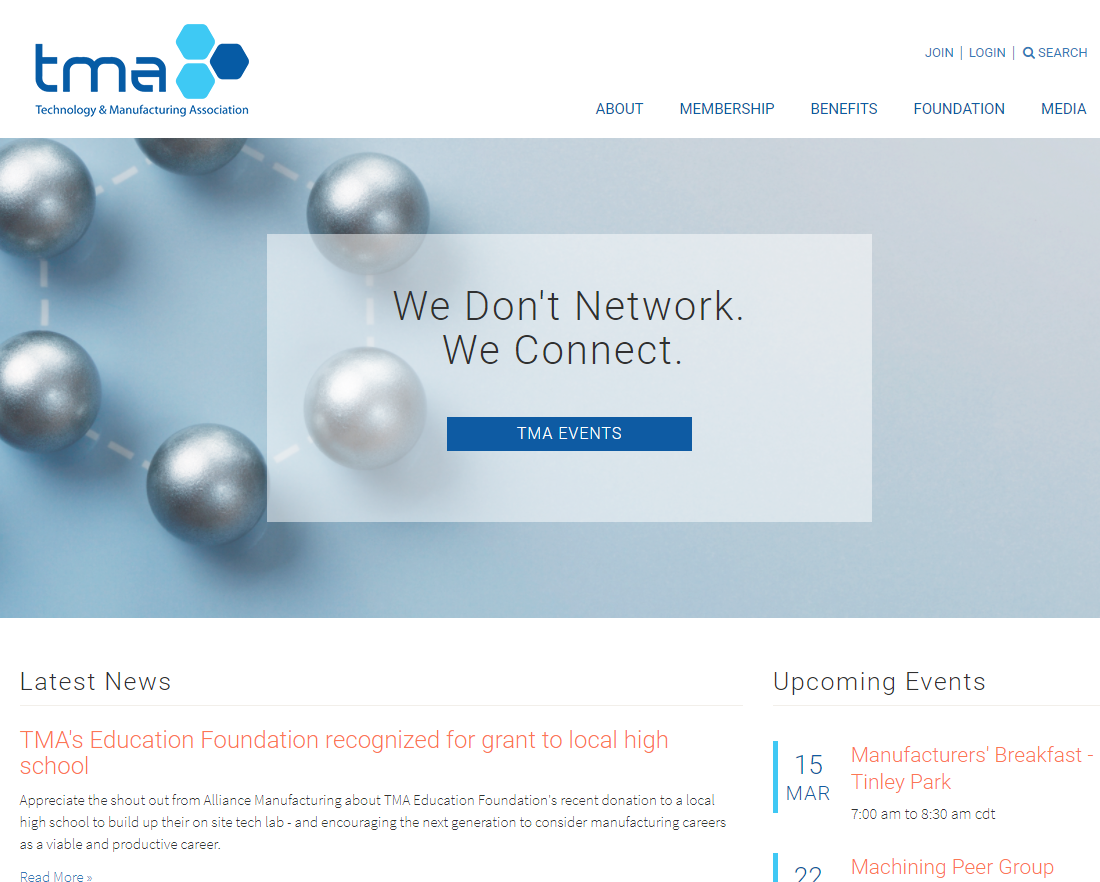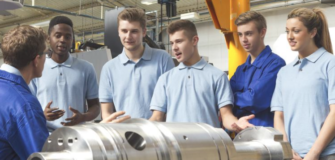TMA’s History of support and community continues
Share

 For the 92nd time, members and of the Technology & Manufacturing Association celebrated the organization’s achievements on March 3, 2018 – a long tradition of renewing the organization’s vision and energies as it serves Chicago area small- and medium- sized manufacturers.
For the 92nd time, members and of the Technology & Manufacturing Association celebrated the organization’s achievements on March 3, 2018 – a long tradition of renewing the organization’s vision and energies as it serves Chicago area small- and medium- sized manufacturers.
TMA’s archives proves that “the more things change, the more they stay the same.” Indeed, incoming TMA chairmen over the past fifty years shared similar visions as they stepped into their new role as head of the TMA Board of Directors.
1968
In 1968, newly-elected Chairman Eric Oswald focused on encouraging more members to take advantage of the organization’s many resources during the 42nd Annual Dinner that year.
“Since our association exists for the betterment of the industry, I take this opportunity to invite all of our members to take a more active role. Join committees, attend affairs, enroll in seminars, send items of interest to the office, make use of the Group Insurance and Group Pension Plans. Send me your comments and ideas for improvement,” he said.
He then listed ten priorities for his year in leadership, including initiating a “full blown marketing program” for the association. He also sought to expand the apprenticeship program, study workers compensation options, pension, retirement and insurance alternatives.
1958
Things were in the midst of change worldwide. Only ten years earlier, the Tool & Die Institute boasted they were inviting “the ladies” to join their Annual Meeting for the very first time. “Make this a ‘must’ for you and the missus,” the News Bulletin urged members.
Special entertainment in 1958 was member Herman Siemund’s “wonderful movies and Hi-Fi” of his and his wife’s recent trip to Switzerland.
1978
Fast forward twenty years, and the 1978 Tool & Die Institute chairman, John Piper, told the 52nd Annual Dinner audience that despite all the news predictions of preceding years, toolmaking was still in existence.
“The industry did not go down the tubes but greatly expanded,” Piper said. “The advent of EDM, and Wire DEM, brought on more changes and more sophistication.”
Despite the need to rework apprenticeships, educational and safety programs, the “Tool & Die Institute was always there to provide the services to meet the changes,” he said.
Piper also urged T & DI members to develop relationships with those representing them in government.
“This is the biggest small industry in the nation because it is the bulwark of the mass production system. We have a right to be heard, we have a right to survive, we have a right to compete, we have a right to run our own companies, we have a right to let America know that small business is the pylon that undergirds our economy,” Piper said.
1988
Ten years after that, the organization’s name had been changed to the Tooling & Manufacturing Association. During the 62nd Annual Dinner, newly-elected board chairman Allan W. Te Ronde continued to urge involvement in the association’s services, but also took time to outline specific concerns that would be addressed in TMA’s 1988 Strategic Plan.
“To prepare for the future, examine the present. To understand the present, study the past,” Te Ronde told the members.
He expressed a concern about the shrinking size of the next generation’s workforce and the problems it would create for American manufacturers – a theme commonly heard in 2018.
“By the late 1990s, youth ages 18-24 will constitute only 9 percent of the working population in the U.S. That’s down from 15 to 16 percent today. Where will our apprentices come from? How will we reach those young people with the ability and desire to learn those skills we so desperately need? How can you and I reach the schools, the media, the legislature and those young people in order to present our message of a promising careers in metalworking?” Te Ronde asked.
2008
In 2008, TMA’s incoming chairman Raymond Wiltgen compared TMA to a vein in a gold mine. “Technology, strategy, human resources, government relations, legal advice, training, education, grant opportunities – they all exist at TMA,” Wiltgen said. “The TMA is here for you, to be what you want it to be. Go mine it.”
2018
Incoming Chairman Todd Beauchamp expressed the value of the association in slightly different terms during his 92nd celebration address, but he too urged members to tap into the TMA community to complement their businesses – a theme similar to those heard fifty years ago.
“We don’t know what tomorrow’s community is going to look like, but we need to be connected in it and work to get out in front of what it will be,” Chairman Beauchamp said in 2018. “As a connected community that works together, we will know, and we will be there for those future needs just like we are for today’s.”
In conclusion Beauchamp said, “So to those who have come before us, and to those who are together now, thank you. Thank you for being a part of our great community.”
A “great community” that will continue to grow and change as it supports its members and their companies into an unknown future – just as TMA started doing with a small group of eight manufacturers in 1925.










